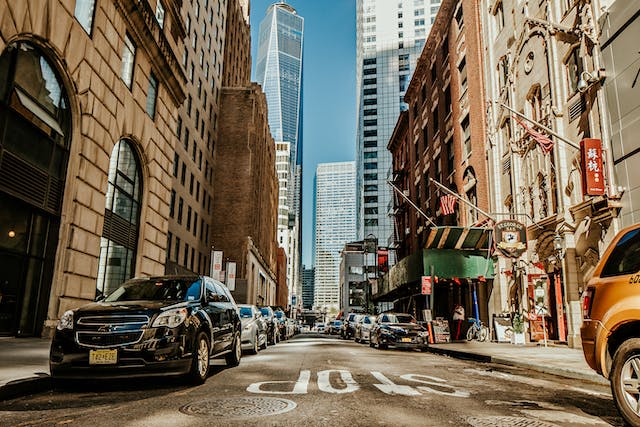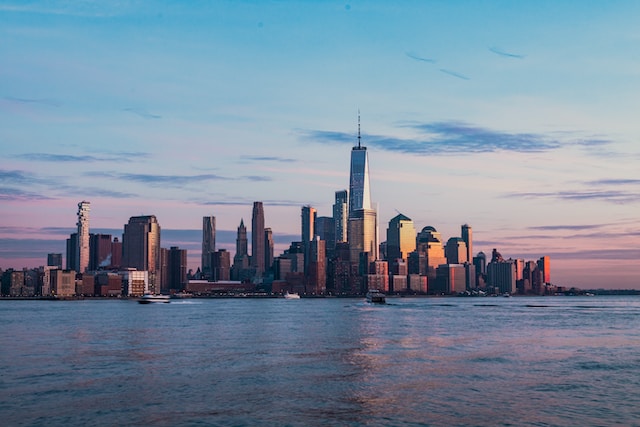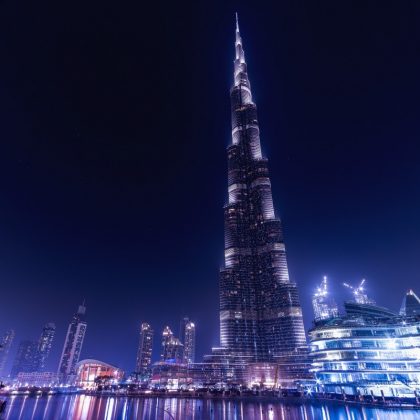New York City, with its signature skyline and storied streets, tells a tale of ambition and artistry. This bustling metropolis stands as a testament to the role of architects and designers in shaping NYC’s urban landscape, revealing an ongoing dialogue between history and innovation.
The Birthplace of Modern Architecture
New York City’s architectural journey showcases a dynamic blend of past and present. The city’s silhouette reveals a tale of innovation, creativity, and a steadfast spirit.

NYC’s architectural panorama beautifully melds historic gems with cutting-edge modern marvels.
Historical Evolution
New York City, in its architectural journey, has been a testament to evolution, bearing witness to various stylistic eras that tell tales of the past while paving the way for the future. From the quaint Dutch colonial homes of the 1600s to the magnificent Beaux-Arts designs of the late 19th century and up to the towering skyscrapers of today, each epoch has left its mark.
This dynamic blend creates a mosaic of architectural wonders that speak of innovation and reverence for history. This city, with its streets echoing stories of yesteryears and its skyline reaching for tomorrow, serves as a living museum. It showcases the genius of generations of architects and designers, reflecting their responses to changing times and evolving societal needs. Every corner, every building, and every brick has a story to share, encapsulating NYC’s ever-evolving architectural spirit.
Icons and Innovators
New York City’s skyline is not just a result of bricks and mortar; it’s a canvas painted by visionary architects and designers who dared to dream. Their contributions, akin to the most impressive civil engineering projects of all time, have molded the character and spirit of the city. Some standout figures and their iconic works include:
- Stanford White: A luminary of the McKim, Mead & White firm, White championed the Beaux-Arts style. His masterpiece, the Washington Square Arch, is a timeless aesthetic for the city’s historic elegance.
- Jean Nouvel: A contemporary trailblazer, Nouvel’s 53W53, also known as the MoMA Tower, has reshaped the city’s modern skyline. The structure epitomizes the fusion of art with architectural excellence, capturing New York’s avant-garde spirit.
- Zaha Hadid: Bringing a touch of futurism to NYC, Hadid’s contribution at 520 West 28th Street is a symphony of curves and fluidity. It defies the grid structure, offering a glimpse into the future of urban design.
The Blueprint of Urban Design
Beneath the surface of individual buildings lies the intricate web of urban planning. This framework ensures that the city functions efficiently while retaining aesthetic coherence.
Crafting Cityscapes
City planning doesn’t just revolve around erecting buildings but involves intricate groundwork. Parks and public spaces play a crucial role. The brilliance of Frederick Law Olmsted and Calvert Vaux shines through Central Park, an urban oasis offering New Yorkers respite from the city’s hustle. This strategic inclusion of green spaces balances the urban density, providing recreational spaces and enhancing overall life quality.

Nowadays, the High Line is a perfect blend of nature and urbanity. This elevated linear park, an example of adaptive reuse, transformed obsolete railway tracks into a flourishing urban garden. For businesses contemplating corporate relocation services in NYC, landmarks like the High Line provide an enticing and progressive backdrop for their endeavors. It showcases a city that respects its past while embracing the future, which can be enticing for many businesses and their clients.
Advancing with the Times
New York City, ever pulsating with life, does not rest on its historic laurels. The role of architects and designers in shaping NYC’s urban landscape is one of dynamic evolution, with contemporary demands and innovations being met head-on. Central to this continuous transformation is the adoption of leading-edge technologies in engineering.
In recent decades, the city has witnessed a surge in sustainable architecture, responding to global calls for environmental consciousness. Green rooftops, energy-efficient building systems, and materials sourced with eco-awareness represent more than mere trends; they are indications of a city evolving in harmony with its environment.
Furthermore, advancements in digital tools and software have enabled architects to visualize more intricate designs and execute them with unparalleled precision. BIM (Building Information Modeling), for instance, offers a holistic view of projects, allowing for efficient planning and resource allocation.
With technology pushing boundaries, architects and designers find themselves equipped to craft structures that aren’t just aesthetically pleasing but are also responsive to the city’s growing needs. Through this synergy of design and tech, NYC continues to reinforce its reputation as an architectural beacon for the world.
Echoes in Culture and Society
Beyond their functional roles, NYC’s structures have permeated global culture. They’ve become symbolic landmarks, encapsulating the city’s ethos and spirit.
Art Meets Architecture
New York City stands at the crossroads where art and architecture seamlessly blend. Over the years, its iconic buildings have transcended their primary function, becoming cultural symbols recognized globally. These architectural marvels are not mere structures but narrators recounting tales of epochs gone by and visions of the future.
The city’s skyline has frequently graced cinema screens, reinforcing its stature as an emblem of urban grandeur. Tourists and residents alike find themselves captivated by the poetic union of design, artistry, and functionality. And for those yearning for a deeper connection, NYC offers everything you need to know about architecture and engineering. Through dedicated museums, guided tours, and academic seminars, the metropolis provides a comprehensive insight into the world of design.

Such is the city’s charisma that its buildings inspire artists, filmmakers, and dreamers. In this captivating blend, New York reaffirms its place as a global epicenter where artistry meets architectural brilliance.
A New Dawn Beckons
As we navigate the corridors of the 21st century, it’s evident that the role of architects and designers in shaping NYC’s urban landscape remains pivotal. They are the visionaries, blending functionality with aesthetics, ensuring New York remains a city of dreams. Each new project or renovation isn’t just about brick and mortar; it’s a testament to a city’s unwavering spirit, evolving to meet the aspirations of its inhabitants.





